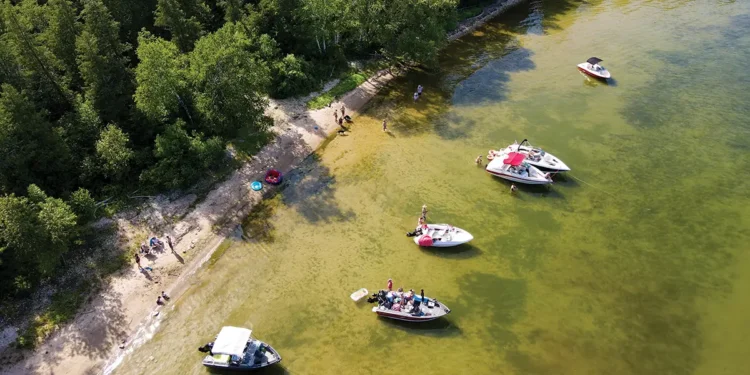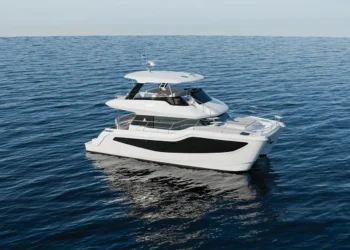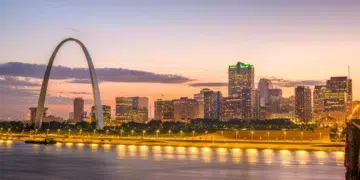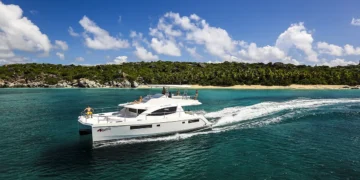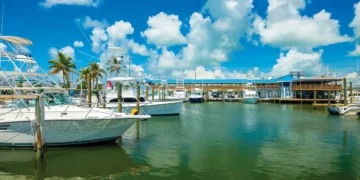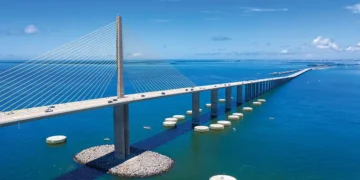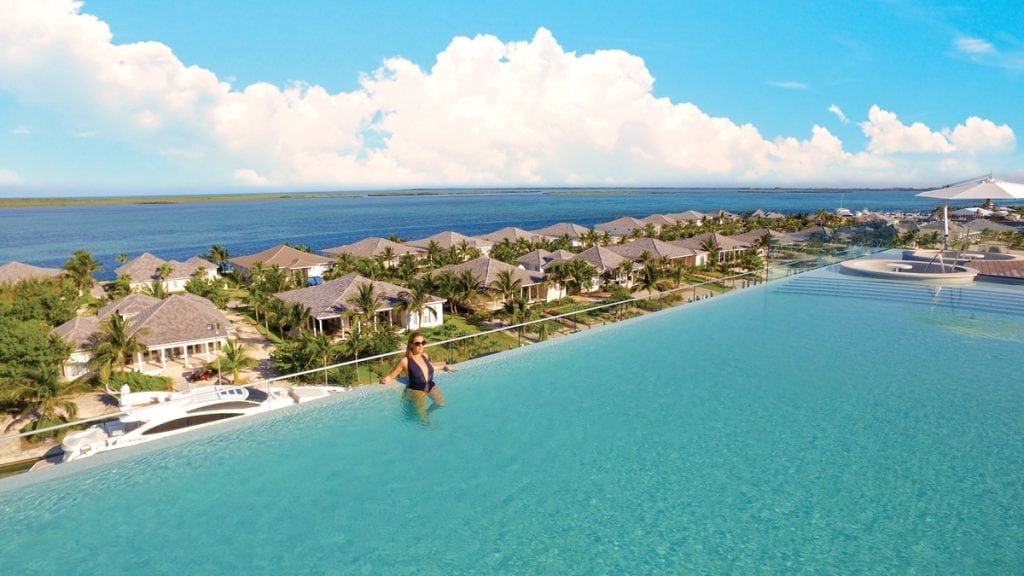Explore the rivers, harbors, and bays of these different, but equally rewarding, boating destinations.
Also Read
A Quick Preview Inside the Aquila 46 Yacht: Beam, Layouts, And More
Aquila 46 Yacht Quick Facts Model: Aquila 46 Yacht (new for 2025)Design DNA: “Explorer” aesthetic from the Aquila 50 YachtCertification:...
Jacksonville and the St. Johns River, Florida
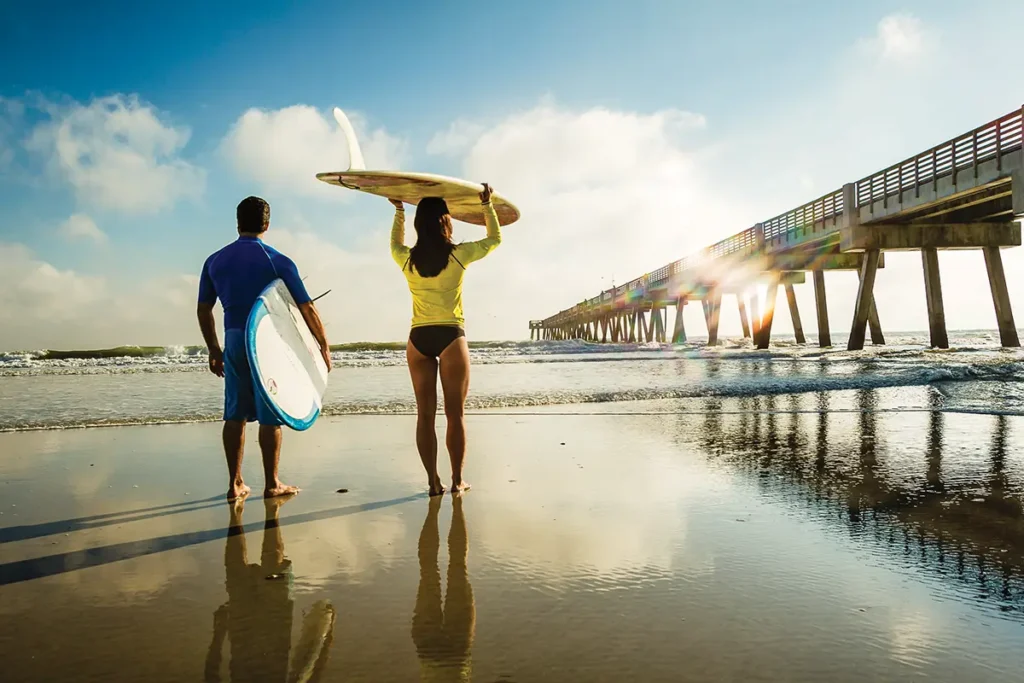
You’d be forgiven for overlooking Jacksonville as a prime boating destination in Florida. It gets less attention from outsiders than Tampa, the Keys, or Miami, but the city and the winding St. Johns River have plenty to do to recommend them. It’s a great side trip off the Intracoastal Waterway (ICW), a weeklong getaway, or even a new seasonal cruising ground to discover—there are lots of boating trip ideas.
This part of the Sunshine State is notable for its countryside and impressive array of green spaces. Jacksonville claims to have the largest urban park system in the country, consisting of more than 80,000 acres—and that doesn’t include several state parks, two national park sites, and numerous gardens. From beautiful beaches to preserved wetlands, you get a few glimpses as you cruise upriver. But, your best bet is to rent a car and explore some of the harder-to-reach locations, such as the beautiful Atlantic beaches, the popular Jacksonville Zoo, or the fascinating historical sites at Fort Caroline, the Timucuan Preserve, and Kingsley Plantation.
Cruising the northward-flowing St. Johns is an attraction in itself. It’s the state’s longest river at more than 300 miles, and it’s navigable to the outskirts of Orlando. Bordered by some of the prettiest parts of northern Florida, must-see spots include manatee-filled Blue Springs State Park and picturesque Silver Glen Springs on Lake George. Ports of call along the way include river towns like Green Cove Springs, Palatka, and Sanford.
Subscribe Here For More Boating Content
Entering the river from sea, the wide big-ship inlet is passable in most conditions. The current can be formidable, though, up to 3 knots or more between the breakwaters. Upon entering the inlet, you’ll immediately pass the fishing village of Mayport, and the junction with the ICW at Sisters Creek comes after 5 miles. It’s another 16 miles or so before you get to downtown Jacksonville. The first 10 miles of the river have the most ship traffic, so it’s not a bad idea to monitor VHF Channel 13 in this area to help you keep clear of the big guys.
You may smell one Jacksonville waterfront landmark before you see it: Maxwell House Coffee has been roasted and packaged here since the 1920s, in a large building marked by an iconic 1950s neon sign. At the time of writing, the city is revitalizing its fabulous Riverwalk. These linear waterfront parks connect both sides of the river and some of the city’s best sites. There are several floating docks that allow up to 72 hours of free dockage in any month. Just be sure to honor any signage and keep clear of the reserved water taxi spots. The 78-slip city marina at Metropolitan Park is currently closed for renovations.
There are also plenty of commercial, full-service marinas to pick from. You’ll find the Seafarers and Arlington Marinas just off the river as you approach downtown, and Exchange Island offers a somewhat protected anchorage. Just before the Main Street lift bridge, the Plaza Marina is to starboard. Jacksonville Marina Mile is just south of downtown, along the Ortega River. There, hidden behind a 1920s drawbridge, are a cluster of docking options, including Port 32 Jacksonville, Windward at Sadler Point, and Lamb’s Yacht Center.
Boston and Boston Harbor, Massachusetts
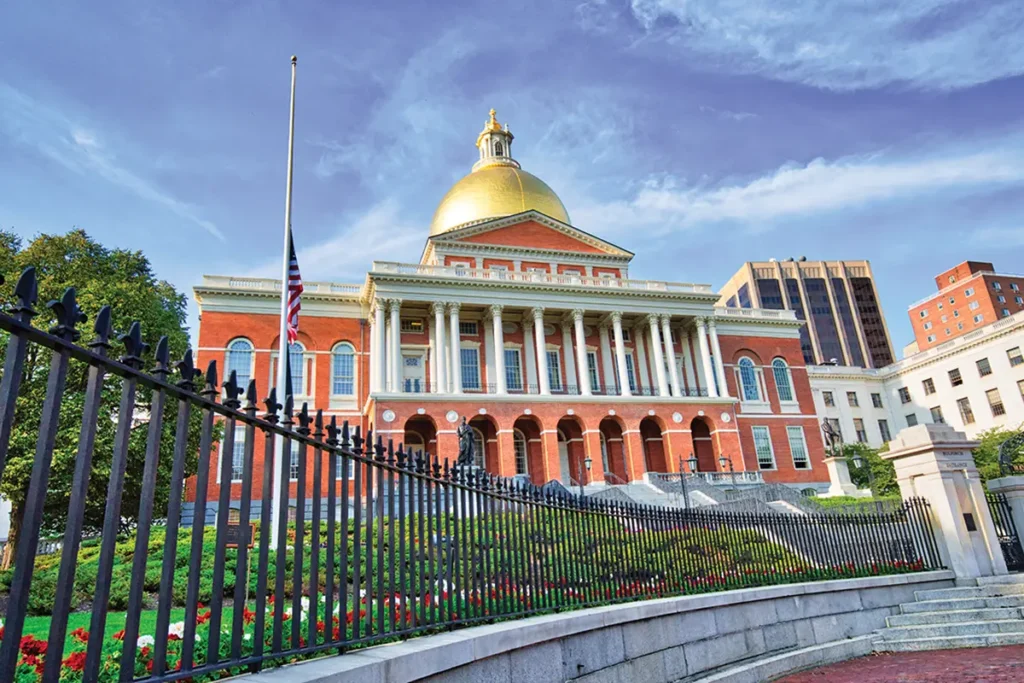
Since the first 11 English ships arrived in 1630, Boston has been a vibrant, evolving, and captivating location. Few boating destinations are more steeped in history and our national identity than Boston Harbor. But, beyond the USS Constitution floating in the same waters as your hull, the City on the Hill is full of great attractions to explore.
Entering from Massachusetts Bay via either Nantasket Roads or President Roads reveals a string of islands making up the Boston Harbor Islands National and State Parks. For boaters, it’s a playground of anchorages, with forts, hiking, pebble beaches, and lighthouses to explore. Access and seasons vary with each island, and some have limited or no public entry, so you’ll want to check the rules before going. Several islands offer moorings that can be reserved through Dockwa, while a few provide anchoring options or first-come, first-served moorings.
Continuing up the main channel takes you past Logan Airport and South Boston and into downtown. Currents throughout the harbor are usually a knot or less, but the 10-foot tidal range may surprise some coming from down south. The heart of downtown is to port and includes some of the most popular parts of the city to visit: Downtown Crossing, Government Center, and the Financial District. There are plenty of options if you’d like to tie up and explore: transient docks are available from Boston Yacht Haven, Waterboat, and Rowes Wharf. Waterboat and the Boston Harbor Sailing Club also offer moorings to transients, but the wake-filled harbor may make you wish you’d taken a slip.
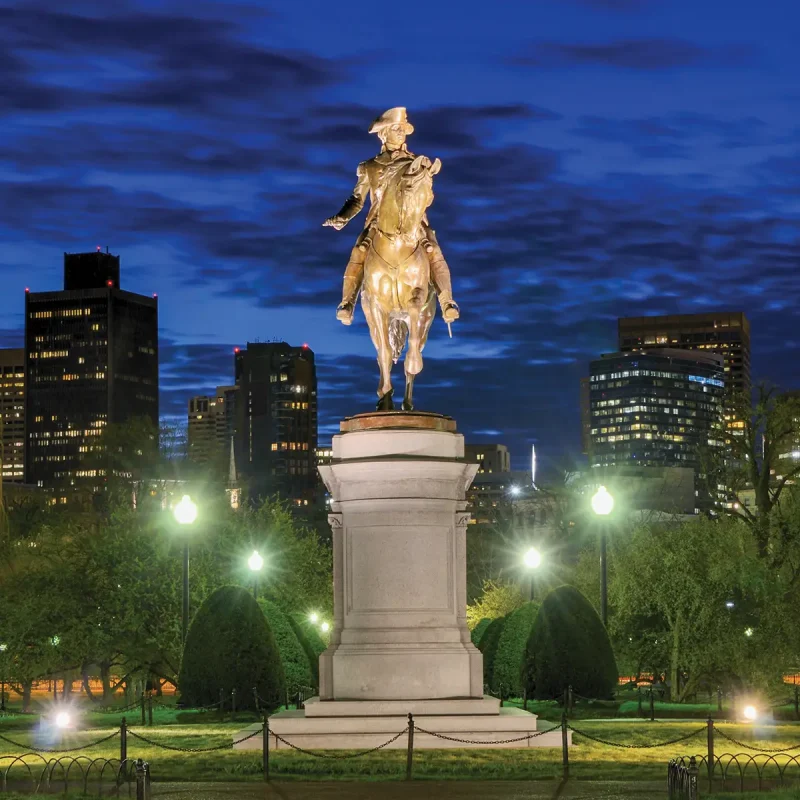
Boston makes a great stop for boaters, partly due to its gorgeous Harborwalk. Roughly 43 miles of linear parks line the shoreline, providing public access, beautiful water views, and easy walking to the city’s top attractions. There’s also the famous Freedom Trail, a 2.5-mile-long path through town that connects 16 sites of historical interest, including museums and must-see landmarks.
The marinas put you steps away from the best of it: sites like Faneuil Hall Marketplace, North End with its fantastic dining options, museums such as the Museum of Fine Arts, and parks like Boston Common and the Public Garden. It’s only about a 30-minute walk over to the Beacon Hill neighborhood, with its cobblestones and gas street lights.
For a slightly quieter stay, pass downtown and tie up in Charlestown. Charlestown Marina and Constitution Marina, in the shadow of Old Ironsides herself, offer slips that put you right next to the famous Naval Shipyard district in this fashionable area. It’s the oldest part of the city and home to landmarks like Bunker Hill.
No matter where you tie up, Boston’s public transit makes getting around easy. There’s little need for a car, and it’s not worth the hassle of parking and traffic. From subways to ferries, you can go anywhere. With that in mind, it should be mentioned that there are more than a dozen other marinas spread around the region, providing options if you want a quiet place to stay while commuting into the busier parts of town.
Sturgeon Bay and the Upper Door Peninsula, Wisconsin
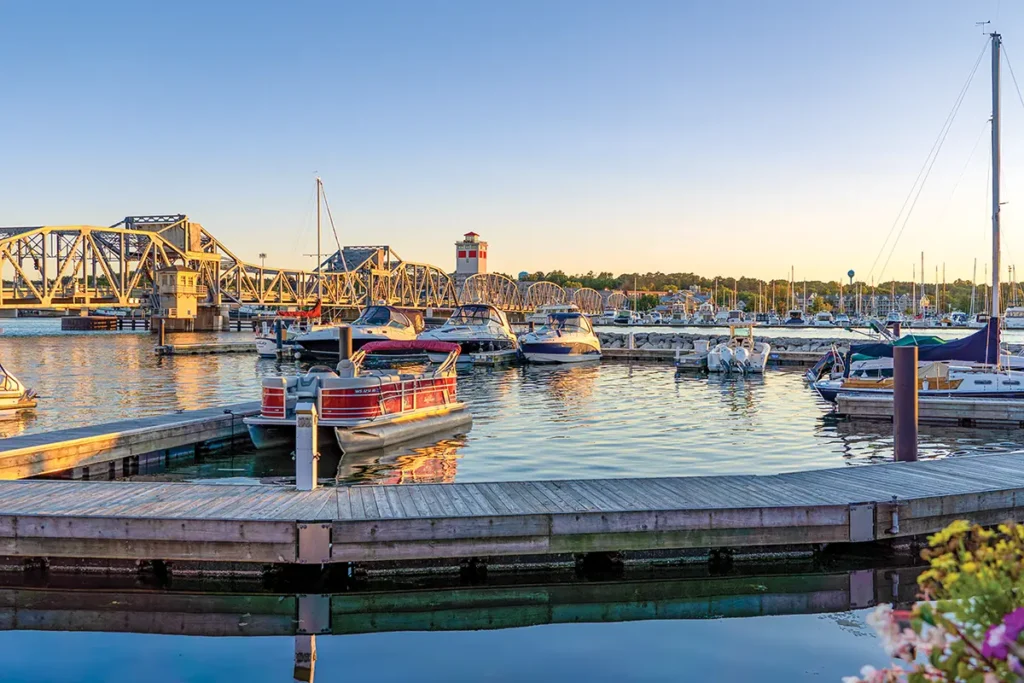
With 300 miles of coastline, 11 lighthouses, and countless welcoming ports of call along its shores, Wisconsin’s Door County is a Great Lakes boater’s dream. It’s also a favorite stop for cruisers passing through, whether they’re on the Great Loop or simply taking a summer cruise.
The Door Peninsula consists of the thumb of land that extends from northeastern Wisconsin, sheltering Green Bay from the broader waters of Lake Michigan. Cruising in from the east, many skippers will cross from Lower Michigan around Washington Island, then make their way southwest along the Bayside coast, exploring the many charming small towns and harbors. Each stop is appealing, so much so that locals refer to the area as the “Cape Cod of the Midwest.”
Ports of call along the way of this boating destination include Sister Bay, Fish Creek, and Egg and Eagle Harbors — summer resorts and hangouts that draw visitors back every year. Don’t miss Al Johnson’s Swedish Restaurant in Sister Bay, with its grass roof maintained by a herd of hungry roof-climbing goats. Keep in mind that if you plan to visit these popular towns, there is limited dockage and advanced reservations are recommended.
For those looking to escape the town, Peninsula State Park and Ellison Bay offer stunning coastal bluffs and tranquil coves perfect for anchoring. At the far northern tip of the peninsula, Washington, Detroit, and Rock Islands are a special treat, with fabulous beaches, clear water, and welcoming little fishing ports.
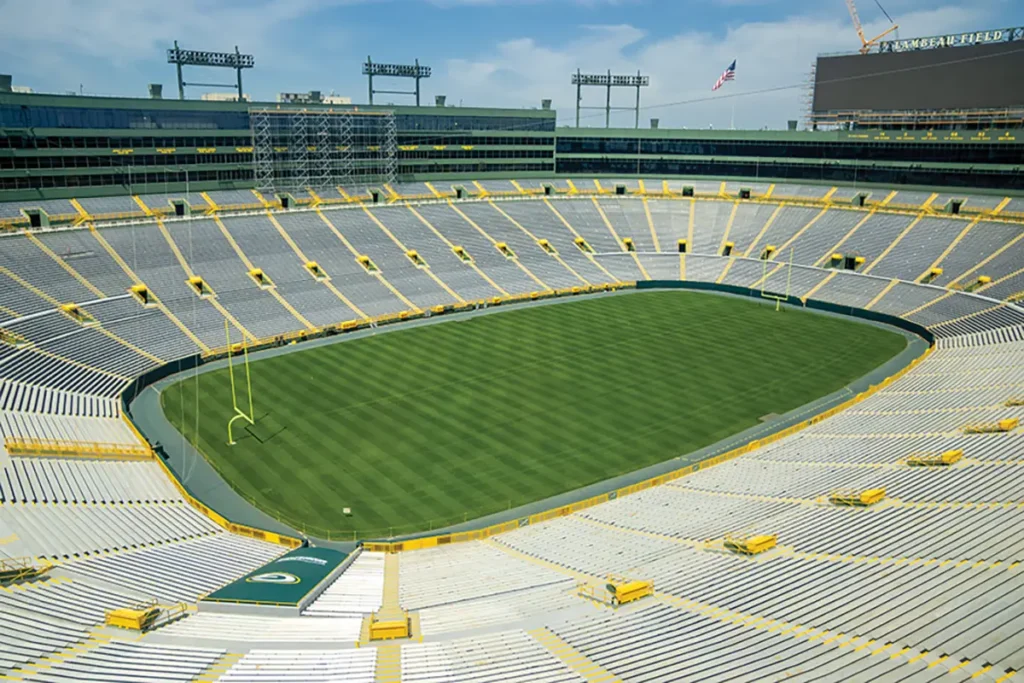
There’s plenty of cruising to do, but Sturgeon Bay is at the center of the action. The city, with its multiple marinas and services, can be accessed from Green Bay via Sturgeon Bay or from Lake Michigan via the Ship Canal. You’ll find a cluster of marinas where the two routes meet in the middle, including Quarterdeck, Bay Marine, and Harbor Club on the south shore, and CenterPointe Marine on the north. Space to anchor is available on the south bank, off the Quarterdeck Marina. From here, your itinerary can take you in nearly any direction, with hops to the Upper Michigan coast or simply meandering along the Door County coast.
Sturgeon Bay makes a great base to explore by boat, but the town and landside attractions are appealing, too. Keep an eye out for farmers’ markets featuring locally grown cherries. There are tons of restaurants, breweries, arts, and music to keep you full and content all summer long. This is a historic ship-building town, and a trip to the Door County Maritime Museum is worth your time to learn more about the region’s deep nautical heritage.
You might even want to consider docking the boat, renting a car, and exploring by land for a while. This part of Wisconsin is loaded with state parks and natural areas just waiting to be discovered. You can visit orchards and farms, or even wineries and vineyards on the Door County Wine Trail. It’s less than an hour’s drive down to Green Bay, home of Lambeau Field. You can also book a trolley to take you to many nearby destinations, some of which offer themed tours, such as lighthouses
or wineries.
Don’t leave without sampling the area’s culinary treat: a fish boil. Like the Lowcountry boils popular on the Southeast coast, this is a vegetable and seafood affair. But it features local whitefish and is finished off with a pyrotechnic fireball to burn off the fat. It’s a fun group event to share with buddy boats, and it’s just one sampling of the region’s Scandinavian heritage. Of course, the only appropriate way to finish it off is with a slice of the local favorite: cherry pie.
-by Matt A. Claiborne


